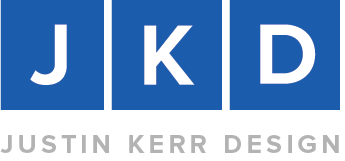It’s the End of the World as We Know It, and I Feel Fine
There has been a lot of conversation over the past year about the rise of AI and the effect it will have on our society. Speculation has ranged from “AI will become self-aware and wipe out humanity!” to “It’s just a passing fad.” I fall somewhere in between those extreme responses.
In this post I will limit my thoughts to Generative AI, specifically as it relates to MidJourney and Dall-E — software that is used to generate images from text-based prompts. The first time I experimented with Generative AI was about a year ago when I attempted to produce a photo-realistic portrait of a pirate. I was using Version 2 of MidJourney and was a little disappointed with the results. The software wasn’t able to accurately represent complex elements like hands and eyes and produced something that looked like it had stepped out of a Hieronymus Bosch painting.
A MidJourney photorealistic pirate, circa 2022
A recent D&D avatar I asked MidJourney to create
Currently, MidJourney is in its fifth generation and, wow, what a difference a year makes. The software will still occasionally generate a hand that looks a bit misshapen but you can now create an image of a human that is almost indistinguishable from a photograph. I imagine by this time next year, Generative AI will have left the uncanny valley far behind and artists will be creating static images and films that rival anything captured by a camera in the physical world.
Revolution / Evolution
Is Generative AI disruptive to the world of art and design? Absolutely. But so was the printing press, photography, desktop publishing, and the web. I’ve lived through the last two revolutions in that list and I believe Generative AI will become another useful tool for designers like desktop publishing, digital design, free stock photography, and the web. It’s a natural evolution for the world of design — much like the automobile heralded the end of horse and buggy as the dominant mode of personal transportation.
Will it be necessary to create guidelines and restrictions for the use of Generative AI? Absolutely. The technology is agnostic, neither inherently good nor evil, but how it’s used by humans will determine its role in the design world. The issues of intellectual property, copyrights and trademarks will be worked out in the courts and those of us who wouldn’t lift a copyrighted image from a Google image search to use in a client project will respect whatever guidelines are created as we move forward through this revolution/evolution. The ethics of Generative AI is an important topic and a deep conversational well and I’m not going to do it justice in a few paragraphs so I’ll leave that for another post.
Speaking of writing, I’ve thought about using ChatGPT to pen some of my posts but have decided (for now, at least) to write them myself. I don’t think Generative AI could have completely written this post because it’s bespoke, coming from my personal experience and not just an aggregate of content about the subject of AI that’s been written by others.
In my previous post about Generative AI, I asked the question, “Will I be replaced with a design robot?” At the time I thought the software wasn’t advanced enough to replicate my skillset but AI has advanced significantly over the past year and it’s possible that, not too far in the future, an AI bot will be able to produce design that is indistinguishable from something I created. But designers, like myself, who have lived through a couple of these revolutions and maintained an open mindset will evolve and adapt and find ways to continue designing and thriving alongside AI.


